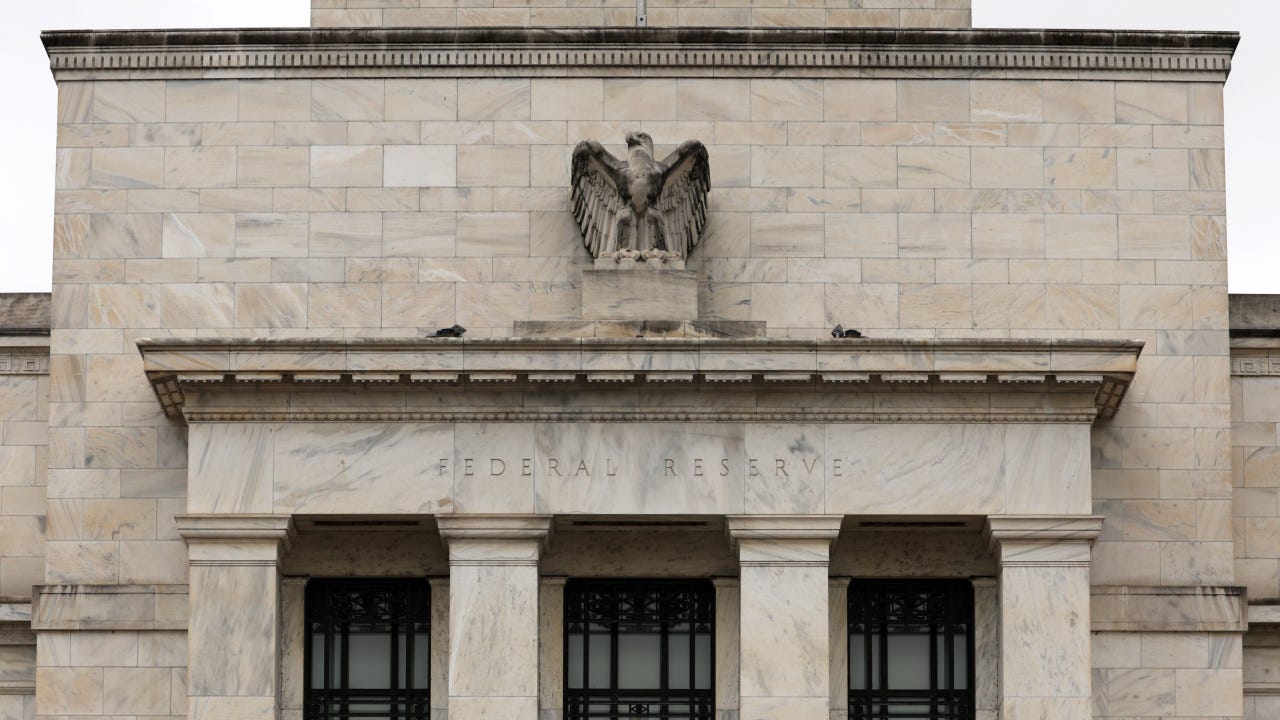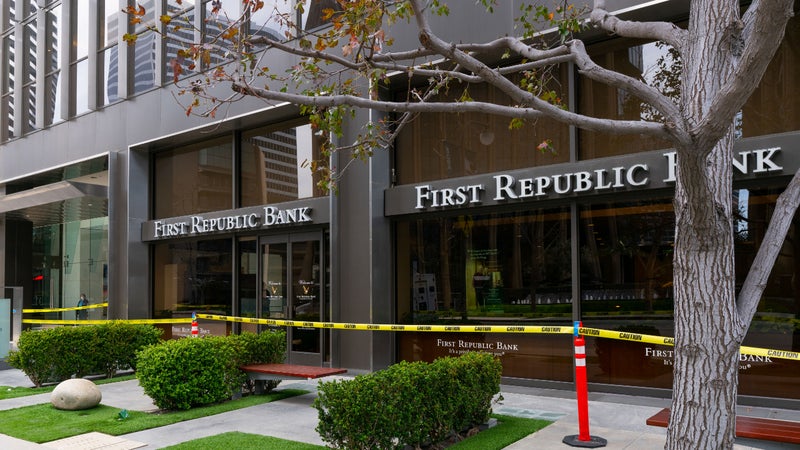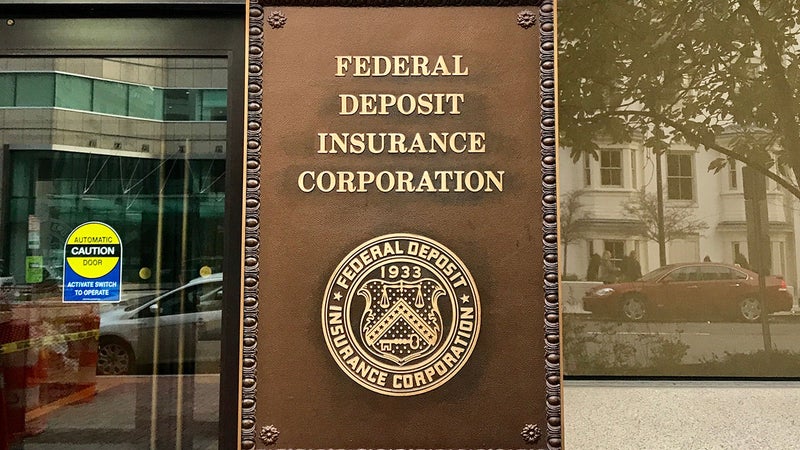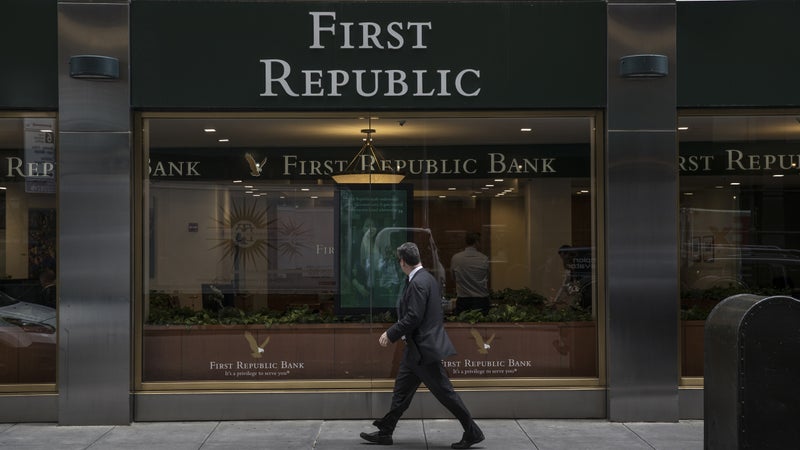Why the Fed jumped in to prevent a full-blown banking crisis following the Silicon Valley Bank bust

The Bankrate promise
At Bankrate we strive to help you make smarter financial decisions. While we adhere to strict , this post may contain references to products from our partners. Here's an explanation for .
Ask any Federal Reserve official what they’d consider a doomsday scenario for the economy, and they won’t say rising unemployment, stubborn inflation or even a global recession.
Instead, they’d likely point to a credit crisis as their own personal nightmare fuel, a dangerous scenario that can come with disastrous economic outcomes — especially if it’s tied to eroding confidence in the banking system and a panic-driven bank run. Case in point: the Great Depression of the 1930s.
That’s exactly what banking regulators were trying to prevent after news of the second and third largest bank failure in U.S. history rocked financial markets, starting first with the Friday collapse of California-based Silicon Valley Bank (SVB) followed by New York-based Signature Bank’s Sunday failure.
The Fed, Federal Deposit Insurance Corporation (FDIC) and Treasury Department announced steps on Sunday that would ensure depositors at the two now-defunct firms lose no money — even if those deposits fall outside the FDIC’s standard $250,000 insurance limits. The Fed also created an emergency facility to help prevent other U.S. depository institutions from falling short on cash, protecting consumers’ deposits at all other U.S. banks.
“The board is closely monitoring conditions across the financial system and is prepared to use its full range of tools to support households and businesses, and will take additional steps as appropriate,” the Fed said in a Sunday statement.
But bank stocks tumbled on Monday as investors showed they were losing confidence that those moves could be enough to prevent a full-fledged meltdown. Market participants are also even betting the news could be enough to get the U.S. central bank to put its rate-hike plans on pause. Some, meanwhile, even see the Fed lowering rates by the middle of the year.
Here’s what you need to know about what officials are doing to save the banking sector, including what it means for Fed policy and whether your money — and the U.S. economy — is safe.
Why did Silicon Valley Bank collapse?
Banks can fail in both good and bad economies, but SVB’s failure wasn’t your average, everyday collapse.
For starters, SVB’s primary customers weren’t consumers — but businesses. Aptly named as a key Silicon Valley financial firm, the bank worked with startups, technology companies and other businesses that dotted the U.S. innovation hub. The bank in 2022 claimed its clients included nearly half of all U.S. venture-backed startups and 44 percent of the venture-backed companies that went public that year.
Those commercial customers boomed from ultra-low rates, and so did the bank. By the end of 2021, its deposits ballooned 53 percent from the prior year, hitting $189.2 billion from just $102 billion in 2020, according to its annual 10-K filing. Back in 2018, deposits were a modest $49.3 billion.
In 2022 and 2023, it was a different story. As the Fed rushed to raise interest rates at the fastest pace since the 1980s, its customers found it hard to raise capital and drew on their cash. At the time of its close, the bank had nearly $175.4 billion in deposits, a more than 7 percent drop from 2021’s levels, according to the FDIC.
Simultaneously, rising interest rates cooled lending activity, weighing on the bank’s ability to continue turning massive profits. The bank instead turned to parking cash in investments, including Treasurys and mortgage-backed securities. Those, however, have also slumped as the Fed raised rates.
That wasn’t a problem — until the bank needed to sell some of those assets to meet the needs of its depositors. Once word got around that the bank on March 8 took a $1.8 billion loss on those investments, customers started to panic. By March 8, depositors had withdrawn $42 billion, nearly a quarter of the bank’s deposits, and SVB said it had a negative cash balance worth $958 million.
When a bank fails, reviving those lost deposits is normally a job best left to the FDIC — perhaps the single most important form of insurance any business or consumer could have for their finances. Yet, nearly 88 percent of SVB’s deposits were considered uninsured at the end of 2022, according to the bank’s regulatory filing that year. The lack of FDIC protections made SVB a prime candidate for a classic bank run.
While its demise didn’t capture as much news attention as SVB, Signature found itself in a similar situation with FDIC insurance blindspots. Nearly 90 percent of its $89 billion in total deposits were not insured, according to the bank’s regulatory filings.
Why did the Fed and other banking regulators intervene?
The firms that did business with SVB kept their cash there for important purposes, such as covering bills and making payroll to keep paying their employees.
Streaming platform Roku was one key customer impacted by the bank’s collapse. The company kept $487 million at the bank, some 26 percent of its cash, it said in a Friday statement. At the time, it said the majority of its money was uninsured, and it wasn’t sure what the fate of that money would be.
Another customer, New York-based toy company CAMP, created a frenzy on social media when it created a sale to raise cash in the wake of SVB’s collapse.
“Our bank got shut down by regulators,” the company posted on social media. “We’re asking that you RUN, don’t walk to our BANKRUN sale.”
While the FDIC normally has limits on how much money is insured, regulators at the agency along with the Fed and Treasury Department can waive those limits if a bank’s collapse is deemed to be a systemic risk to the financial system. That’s exactly what regulators did when they stepped in, even while continuing to find a buyer for the collapsed bank.
What exactly did federal regulators do to help depositors who banked with the now-defunct Silicon Valley Bank and Signature Bank?
The Fed, the FDIC and the Treasury Department announced joint steps on Sunday to shore up deposits, instill confidence in the banking sector and limit any broader contagions to the U.S. economy. Those included:
- The FDIC said it would make all depositors who banked with SVB and Signature “whole,” meaning no customer would lose access to their money. Those customers would be able to access that cash by Monday, the agency said;
- The Fed introduced a new special emergency lending facility that would offer up to one-year loans at relaxed rates (4.83 percent, as of March 13) to other banks, savings associations, credit unions and depository institutions in exchange for government-backed assets as collateral. Notably, the Fed would accept those assets at the original value, so banks don’t have to sell those assets at a loss.
- Removing the “penalty” rate for banks borrowing at the Fed’s discount window.
Don’t call it a bailout. No losses associated with the resolution of Silicon Valley Bank will be borne by the taxpayer, the agencies said. Rather, the money used to cover lost deposits comes from both banks’ assets and the insurance premiums FDIC-member banks pay for coverage.
The moves also won’t refund shareholders or investors, only depositors.
“While the Fed has been talked about a lot in the past year, until today it has been in the context of monetary policy,” says Greg McBride, CFA, Bankrate chief financial analyst. “But today, the Fed acts in the capacity of an even more important role, the lender of last resort, to make sure banks and credit unions have access to whatever cash they need without needing to sell high-quality assets that may be trading for less than face value due to the sharp increase in interest rates.”
What does SVB and Signature Bank’s collapse mean for the economy — and the Fed’s interest rate outlook?
The collapse of the two banks highlights the interconnectedness of the U.S. economy, especially how one sector’s struggles can create damaging ripple effects.
Preventing what could’ve been the biggest tidal wave of economic consequences, depositors should be able to access the money kept at SVB and Signature Bank immediately, according to the FDIC.
But the two failures highlight an even-more-present risk: The unintended consequences of the Fed’s rapid and massive rate hikes.
Fed Chair Jerome Powell indicated just last week inflation isn’t cooling as much as officials previously thought, emphasizing in a March 7 congressional testimony that the Fed was planning to raise rates even higher than the 5-5.25 percent range officials initially penciled in last December.
Powell also added the Fed could hike rates in March by more than a quarter of a percentage point “if the totality of the data” were to confirm it’s necessary.
The Fed’s greatest enemy has been red-hot inflation, meaning the two bank failures aren’t enough to completely derail U.S. central bankers’ plans. Yet, experts say the situation highlights just how much more cautiously the Fed should be about treading forward. The Fed has an equally important role as a lender of last resort and overseer of financial stability.
“This is day-to-day depending on the health and stability of the financial system,” McBride says. “If the system stabilizes and we’re back to worrying about inflation and a hot job market, then a Fed rate hike is back on the table. But not if there are further fissures in the financial system.”
Economists at Goldman Sachs said in a note to clients late Sunday they no longer expect the Fed to raise interest rates at their upcoming March 21-22 meeting.
For the first time this year, meanwhile, investors are also already betting on a near 28 percent chance the Fed may stand pat with rates in March, according to CME Group’s FedWatch. They also see the Fed cutting its benchmark rate down to 4-4.25 percent by the end of this year.
Investors’ shifting expectations sent the two-year Treasury yield falling nearly 61 basis points on Monday alone, its biggest drop since 1987’s historic “Black Monday.”
“We think the Fed should take a pass at the coming FOMC meeting given all that’s going on here over recent days,” said Tom Porcelli, chief economist at RBC Capital Markets, in a note. “Prudence should rule the day — and it can, as long as Powell isn’t running around like he just poked an economic hornet’s nest.”
Will the current turmoil prove to be fleeting — or could it turn into a true crisis?
Regulators are hopeful the steps will be enough to backstop deposits at all U.S. banks and prevent any future failures.
“Americans can have confidence in the safety and soundness of our banking system,” said Treasury Secretary Janet Yellen in a Sunday appearance on CBS News’ “Face The Nation.” She added the U.S. economy is “extremely strong.”
Yet, bank failures and bank runs are a complicated phenomenon. If bad enough, the latter often ends up sowing the seed for the former, even if the bank isn’t showing immediate signs of distress.
“Rationally, this should be enough to stop any contagion from spreading and taking down more banks, which can happen in the blink of an eye in the digital age,” said Paul Ashworth, chief economist at Capital Economics, in a note to clients. “But contagion has always been more about irrational fear, so we would stress that there is no guarantee this will work.”
Regional banks were among some of the hardest hit in Monday’s volatile day of trading for bank stocks, with a key index tracking regional bank stocks sinking nearly 16 percent since March 8.
After its stock fell nearly 62 percent in a single day of trading, First Republic Bank said in a Monday note to clients it took steps to enhance and diversify its financial position, tapping liquidity from both the Fed and J.P. Morgan Chase.
Mid-sized banks are under increased scrutiny in the wake of the collapse because they don’t follow the same capital and regulatory requirements of the nation’s largest banks. They also tend to be less diversified than finance’s biggest names, such as J.P. Morgan Chase and Bank of America. Signature Bank, for example, was a main player in the cryptocurrency industry.
“The action taken by the Federal Reserve, FDIC, and Treasury should prove very effective at preventing bank runs, which was the intent,” McBride says. “But in an environment where interest rates have increased at the fastest pace in 40 years, poorly managed banks or those with inadequate risk management will be exposed. The intent is not to keep bad banks in business. It is to prevent good banks from being swamped by withdrawal requests unnecessarily.”



